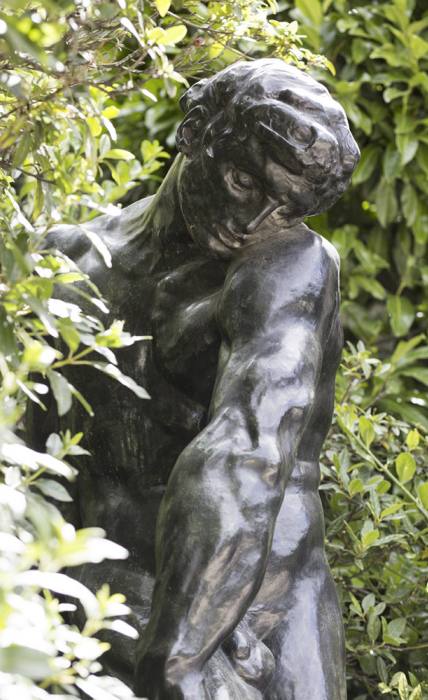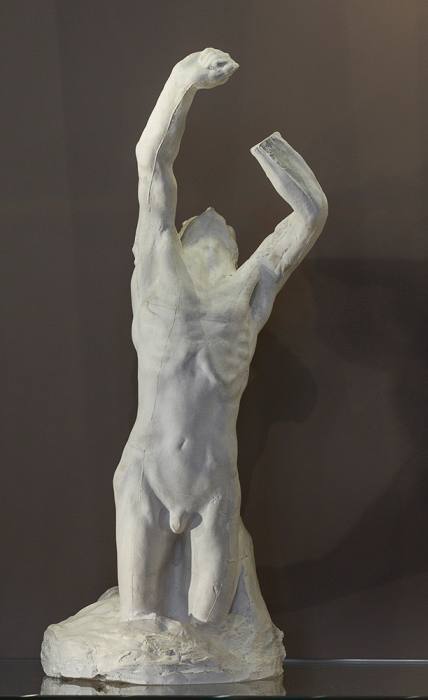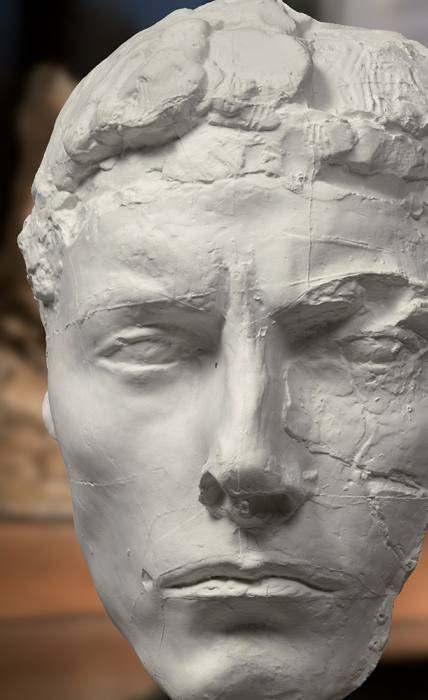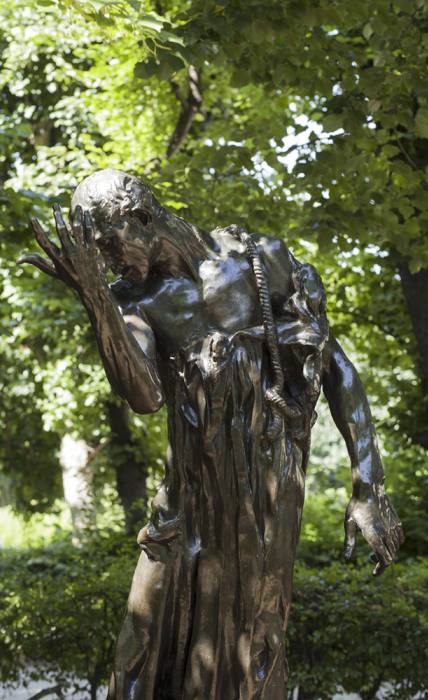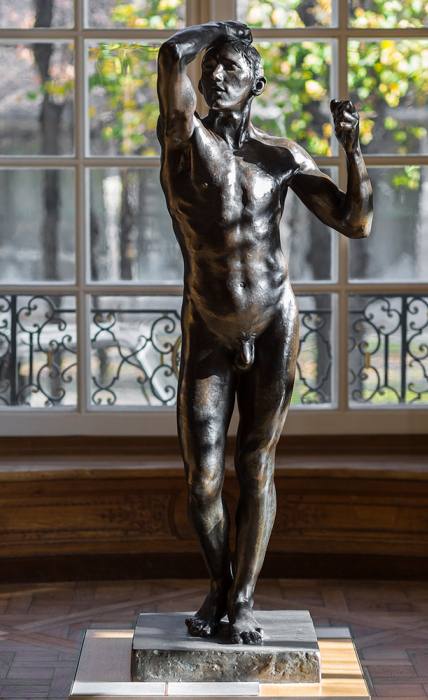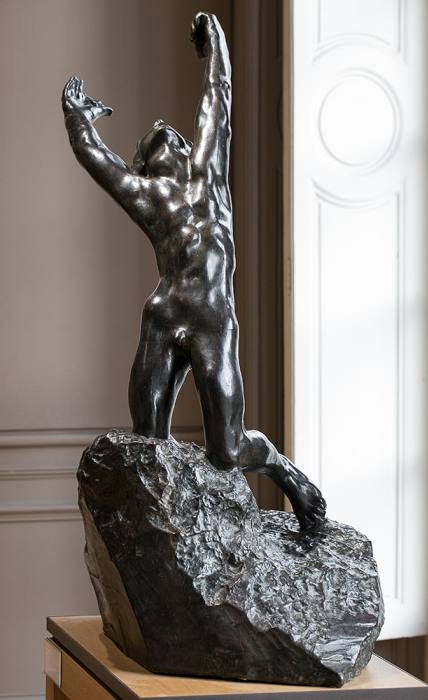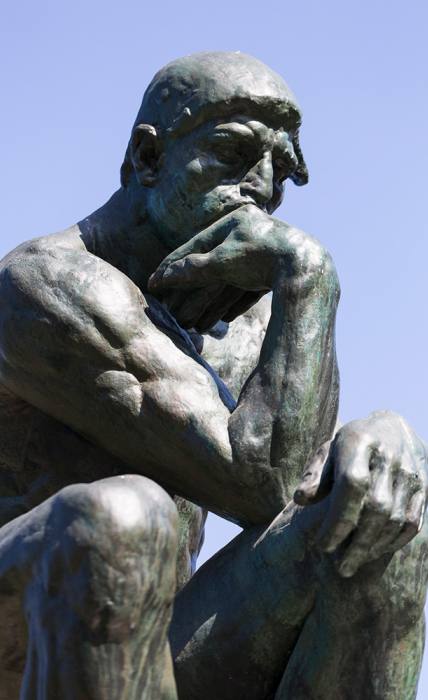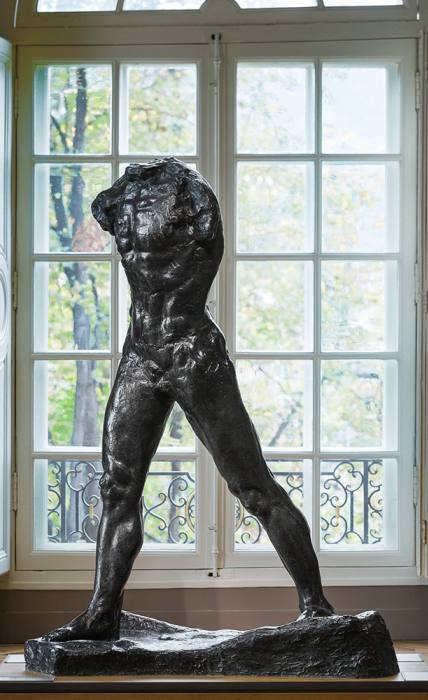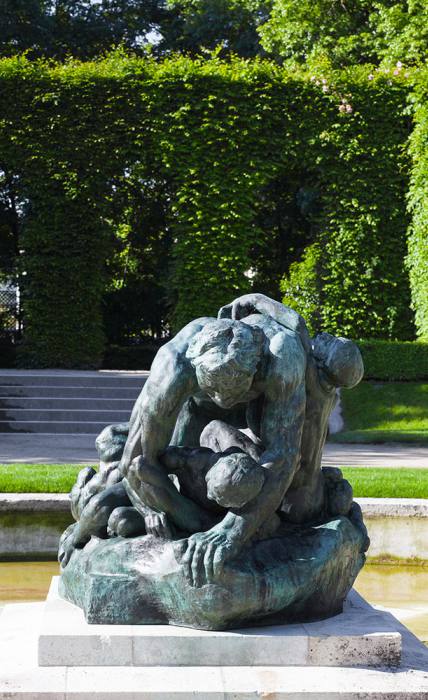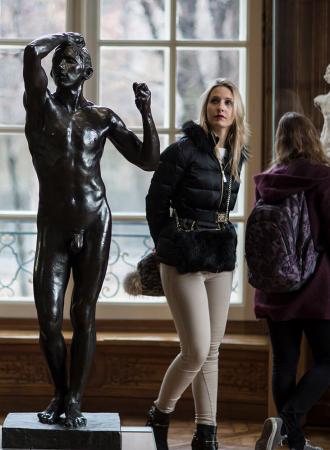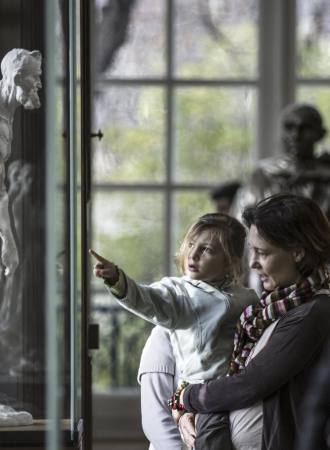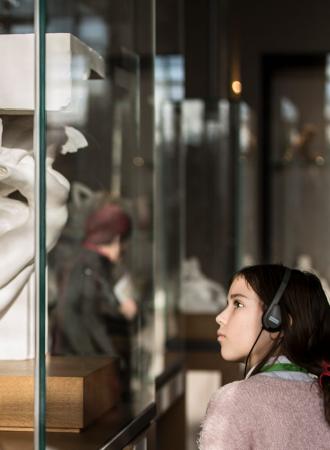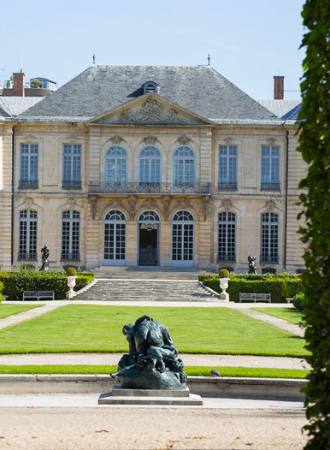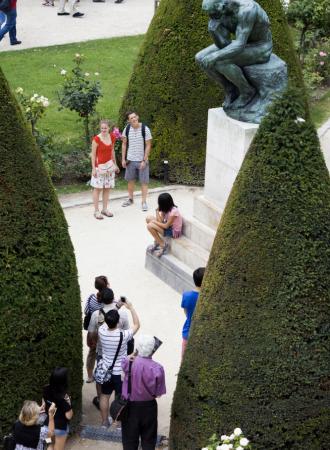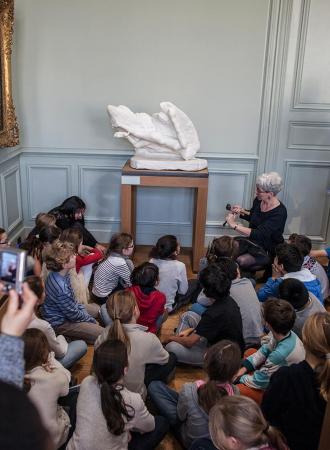Search the site
The eternal masculine...
Rodin is famous for his interest in the female figure, but his best known work―The Thinker―depicts a man. Inspired by ancient art, he sculpted and drew many male figures that came to life under his touch. He rendered their musculature and anatomy expressively and sensually, capturing the truth of the models’ movements. Beyond mere physical resemblance, Rodin intended his virile or androgynous figures to illustrate the sufferings that afflict human beings.
From the expression of life itself…
In 1877, Rodin’s depiction of the male figure known as The Age of Bronze caused outrage: the young man’s body seemed so lifelike that the sculptor was unjustly accused of having cast it directly from the model―proof of the subtlety and realism of his modeling. Rodin regarded the human body as a magnificent machine and endeavored to show its inner workings―bones, muscles, nerves―to bring the surface to life.
Rodin depicted male bodies of all ages and physical types. Some, like The Thinker, Adam and Ugolino, are powerful, broad-shouldered figures with well-developed muscles; others are more slender, with extremely elongated bodies (The Prodigal Son) or slightly prominent ribs that seem to be raised by breathing (The Age of Bronze).
… to the embodiment of human despair
Rodin used these different body types to create a wide range of expressions ranging from strength (The Walking Man) to anguish (Despairing Youth, The Prodigal Son, Ugolino) or submission to self-sacrifice (Pierre de Wissant). He did not see men as heroes, but as human beings tormented by cruel gods (Ulysses, Saint John the Baptist). The sculptor often deformed his figures to heighten their dramatic impact, exaggerating the proportions of the hands or feet which thus acquired an expressive force of their own (Pierre de Wissant).
Rodin paved the way for modernity, taking his depictions of the male body to extremes of expressionism or formal simplification, yet without embracing the classical revival reflected in the Head of Apollo by Antoine Bourdelle―a former student of Rodin, who broke away from the master’s influence.
Selection of works
-
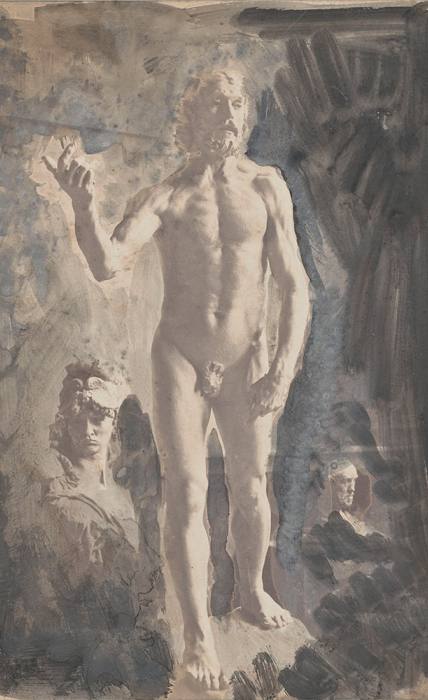
St John the Baptist, Man with a Broken Nose and the Bust of Bellone
Charles Michelez (1817- vers 1894)
